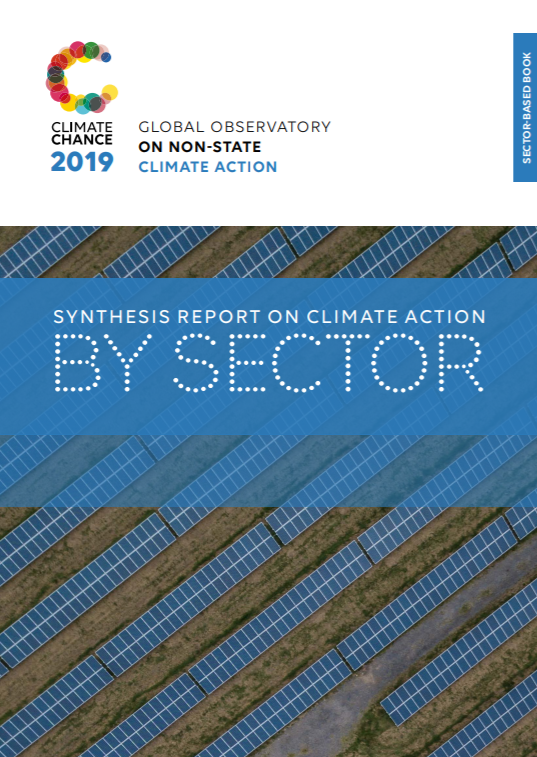
Electricity takes a special place in the fight against climate change: as well as being the cause behind one third of the world’s greenhouse gas (GHG) emissions, it is now responsible for the decarbonation of other sectors – such as transport and building – via their electrification. However, it is not clear how the electricity sector will assume this role. Deeply shaken by the prompt evolution of technologies and by the new players in the energy sector, emissions from the electricity sector are on the rise.
The transport sector currently emits about 9.7 Gt carbon-dioxide equivalent. Estimates suggest that if current trends continue unabated, the global transport sector CO2 emissions could still increase to 10 to 18 Gt in 2050. However, literature also suggests that it is possible to decarbonise the transport sector for realising the Paris Agreement targets. So, considering the magnitude and intensity of the transformation required – are we on the right track? This 2019 global transport profile collects, consolidates and synthesise the most recent data to help untangle the various strands of the transport sector. The ambition is to provide a status of global climate action related to the transport sector and identify the synergies between the State and non–state actors (NSA) activities and bring critical messages to the international community to drive ambition within the transport sector. Our assessment suggests that the transport sector is still at a crossroads. There are some mixed signals about the pace and direction of change in the transport sector; however, encouraging signs are now evident. There has been a groundswell of collaborative actions in recent decades, and the forces of change in the transport sector are becoming strong. We may be very close to a tipping point.
We spend 80% of our time in buildings, and the way they are designed (light, quality of air, space, volume) influences our wellbeing and health. Everyone has some form of relationship with buildings for shelter, eating, recreation, worship, work, and much more. The building sector contributes nearly 40% to global energy-related annual CO2 emissions. These emissions are decreasing since 2016, due to the reduction of carbon intensity of power generation for the consumption of electricity & heat (indirect emissions of building), although direct emissions from direct fuel consumption have kept increasing over the last 3 years. This comprehensive profile reviews the building sector at a global level. It looks at the current emissions, energy consumption, and how they have evolved in recent years, before looking at some of the key policies that are driving improvements. It then examines the myriad of non-state actors’ strategies, and how they are building upon that policy foundation to achieve significant impact. National regulations, policies, and financing tools greatly impact the trajectory of the sector, but the wide range of actions required in the building sector, from construction to end-use, implies the support and enhancing of companies, local governments and citizen initiatives: local regulations and info points, deep renovation of private utilities, multi-stakeholder label systems and financial schemes, etc.
Globally, industrial activities are responsible for the direct emission of around 7.6 billion tonnes of CO2, plus an extra 5 billion tonnes of indirect emissions. This represents about a quarter of global greenhouse gas (GHG) emissions. While industry is considered a sector in its own right, it encompasses a wide range of activities, both in terms of the technologies used and their organisation. In this case study, we focus on 2 sub-sectors: cement and chemicals.
Despite being responsible for around 5% of global GHG emissions, the impacts of waste on climate are less taken into consideration than the local environmental damage waste generates. However, in recent years, plastic pollution and its impact on ecosystems – to the point of being identified as a characteristic in the Anthropocene by some researchers (Zalasiewicz, J. & al., 2016) –, Asian countries’ refusals to be the “world’s landfill”, or even the insistent question of recycling electronic compounds has brought waste issues to the top of the public, economic and geopolitical agendas. Here is an overview of initiatives that, over the past two years, have focused on reducing production and improving waste management.
The main factor of emissions linked to land use is the rate of deforestation that shows no real sign of change: although the number of hectares lost has decreased, 2018 is still the 4th most devastating year for the world’s forests, and it is possible that in this El Niño year, the 2019 toll will be even higher. The fires in the Amazon, the Congo basin, California and Siberia, particularly shocked the global community and even became a part of the G7’s agenda in August. By summarising existing science, the IPCC’s special report on land use was a reminder on how land damage and climate change are mutually reinforcing. However, forests and soils play a vital role as carbon sinks, absorbing the equivalent of the United States’ overall emissions every year. They are also crucial for keeping the balance between all natural resources and therefore enhance the achievement of the SDGs. Some weak signals, at the crossroads of state policies and non-state initiatives, seem to indicate encouraging trends in many parts of the world.


